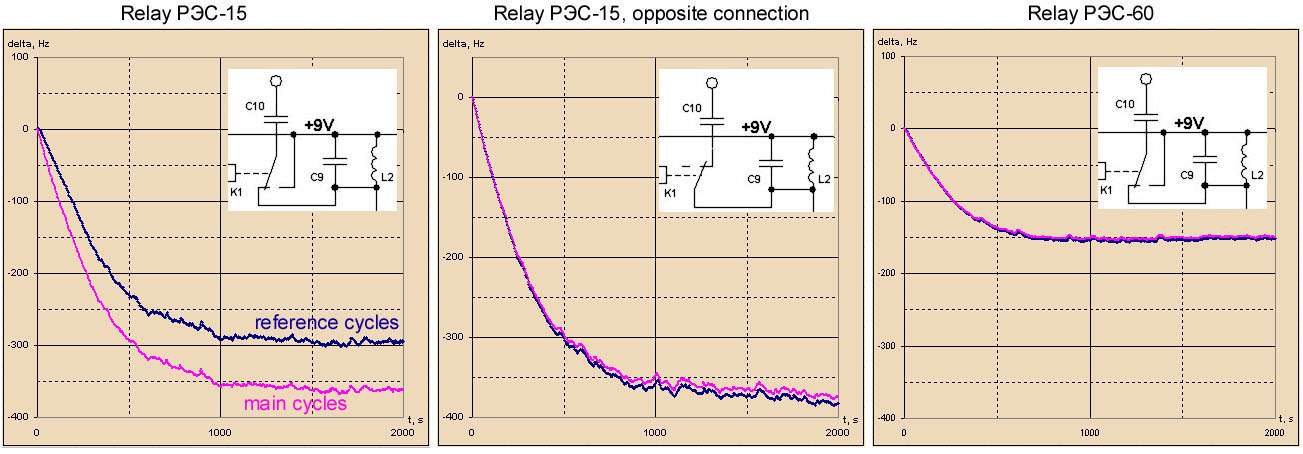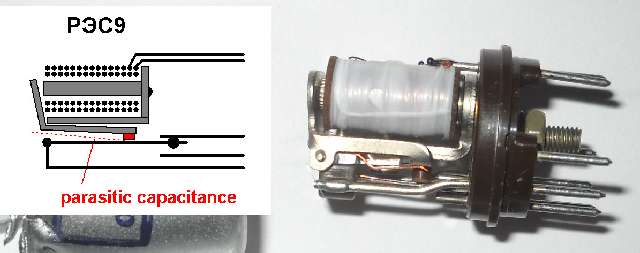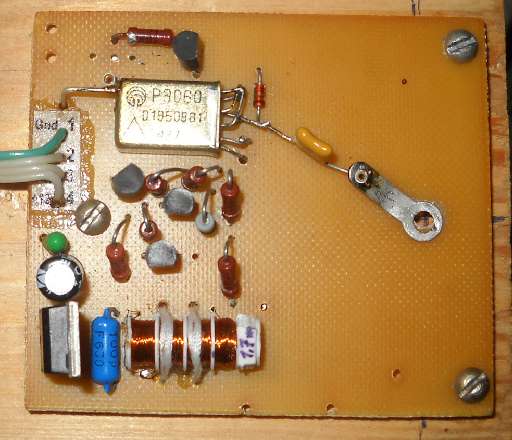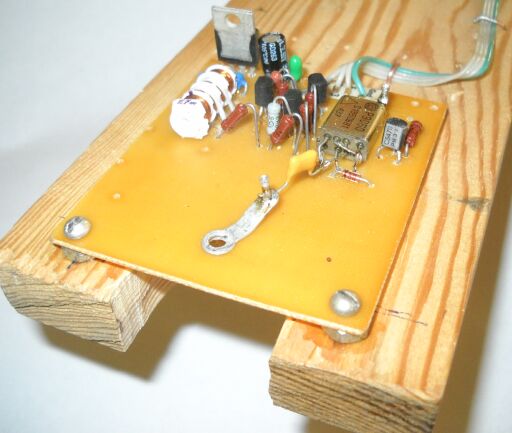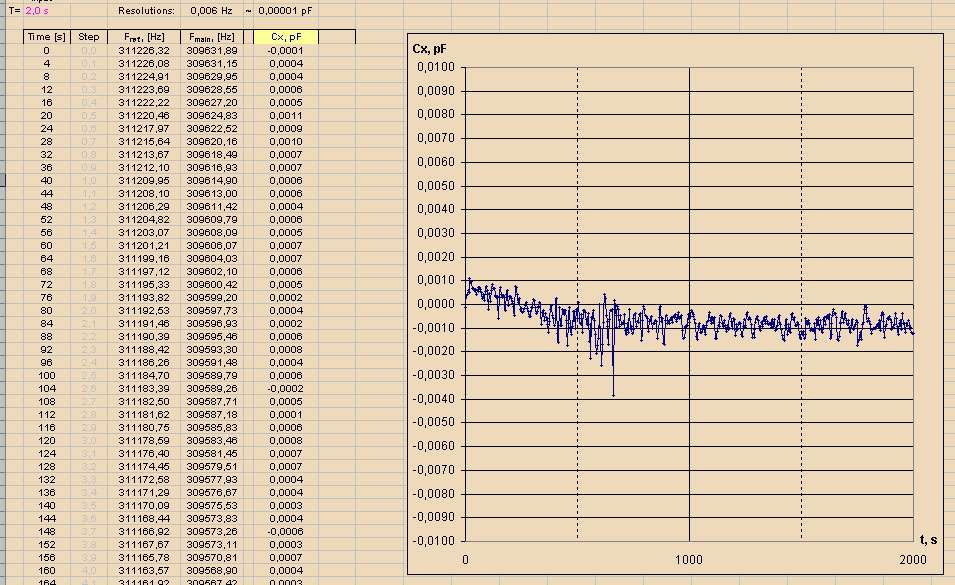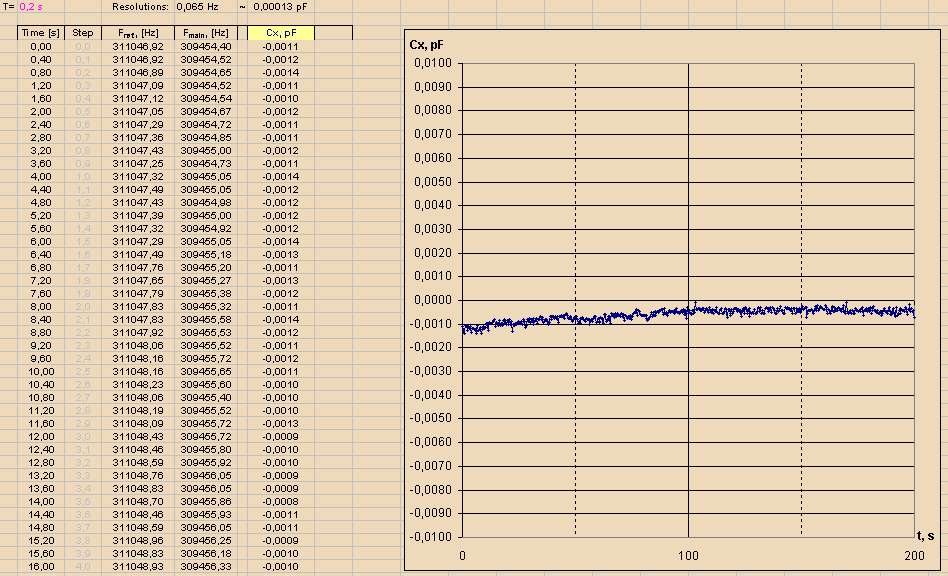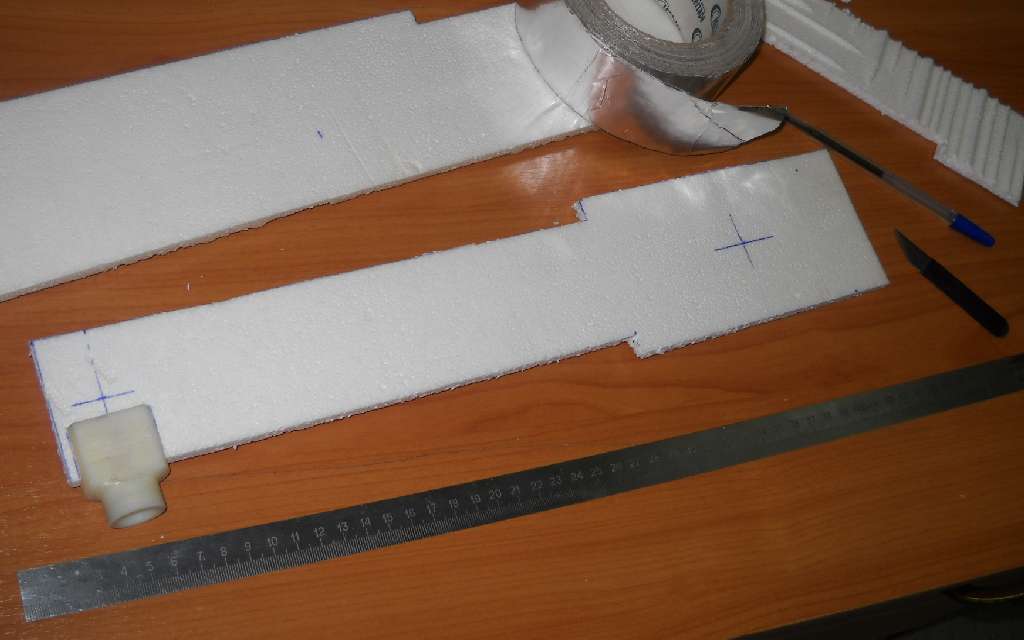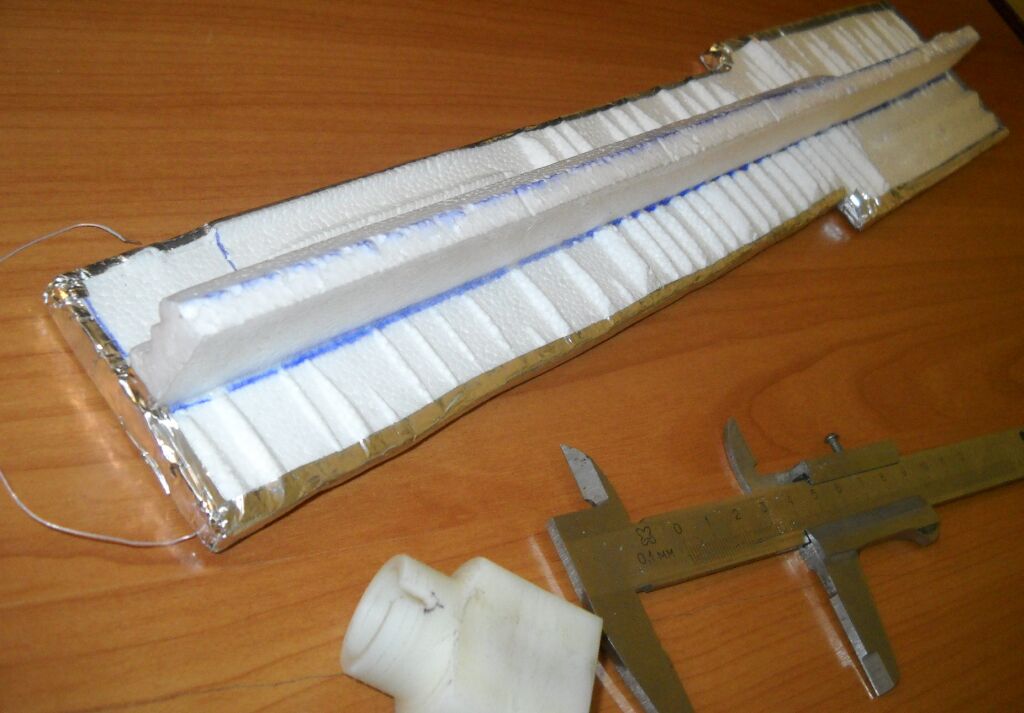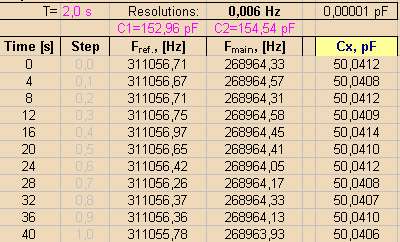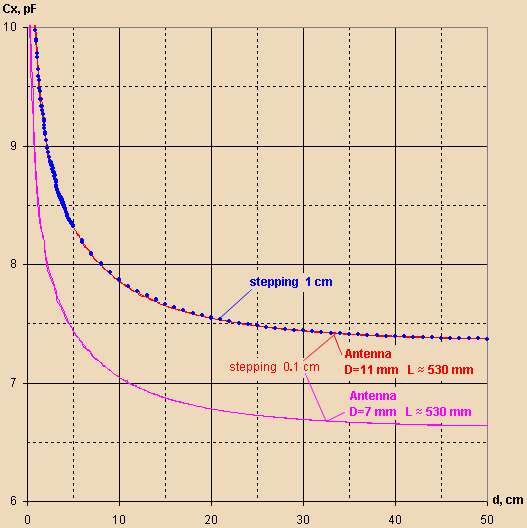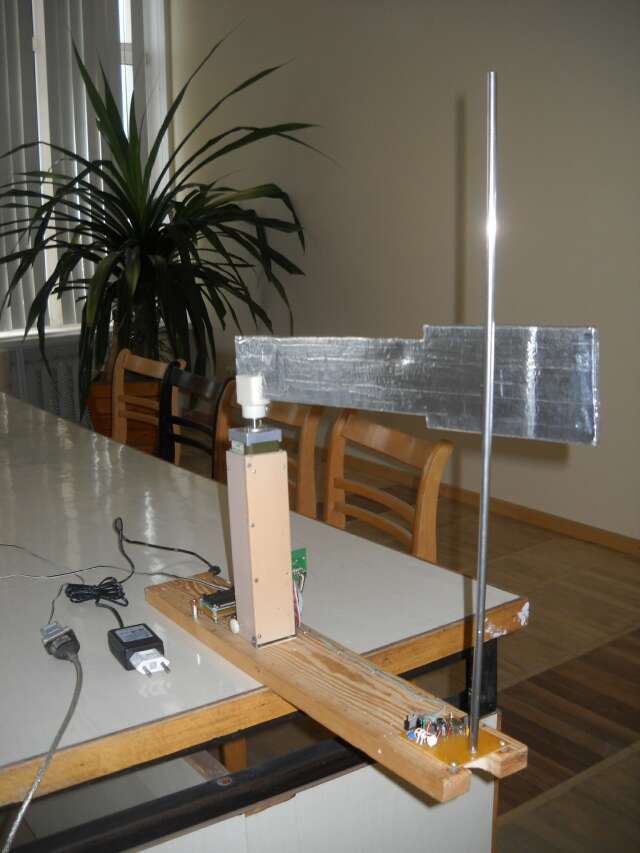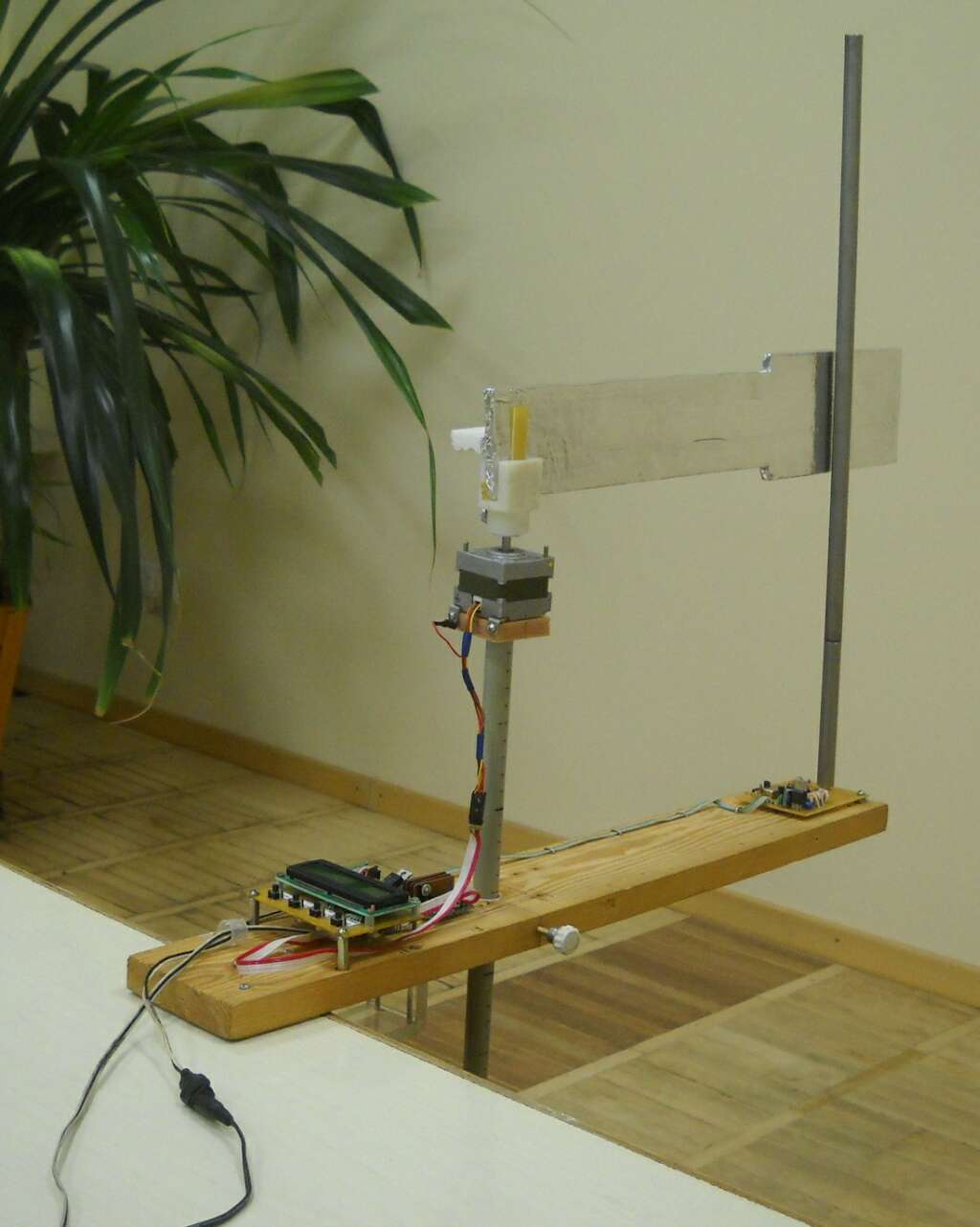"Could be this better?" - ILYA
I know it gets used a lot in Theremin cabinetry and such, but for scientific experimentation I just don't trust wood to be neutral when it comes to C. I'd space the PWB sufficiently above the wood, or better yet make the base underneath plastic. But ultimately I think the oscillator topology is just barely stable enough for what you are doing.
If you need to cut weight, the aluminum coating on the arm can be a single side, I don't think coating all sides, or making it 3D is necessary.
"1. It is still puzzled to me, but the sample time 0.2 s is a best option, regarding to data divergence minimization."
I don't get this either, a longer sampling interval should give you smaller noise because of the implicit integration. All I can think is math noise, or some magnification of the mains noise due to the sampling interval (I see tons less noise on the scope when the trigger delay is a multiple of the mains period).
"2. Warming-up interval is 10...15 min."
This seems really excessive to me. Long warm-up may confound your results down the road. You want an ultra stable oscillator topology that doesn't need more than maybe a minute max in order to stabilize. In particular, oscillators that don't have a nice clean sine wave happening at the tank should be avoided.
Ilya, I hope I'm not driving you too crazy with my nit-picking, this is a very interesting project and I very much appreciate your sharing it with us!


